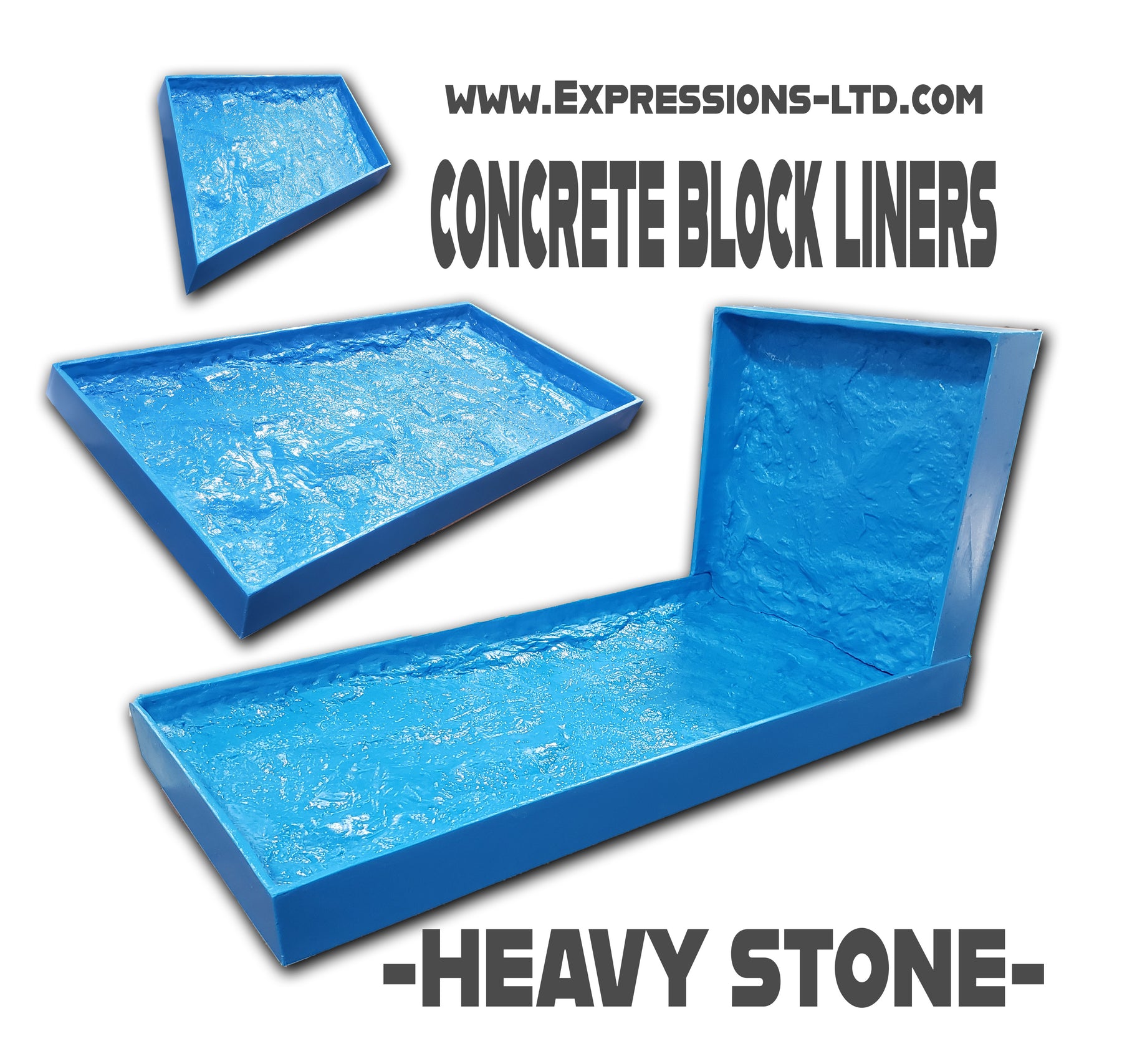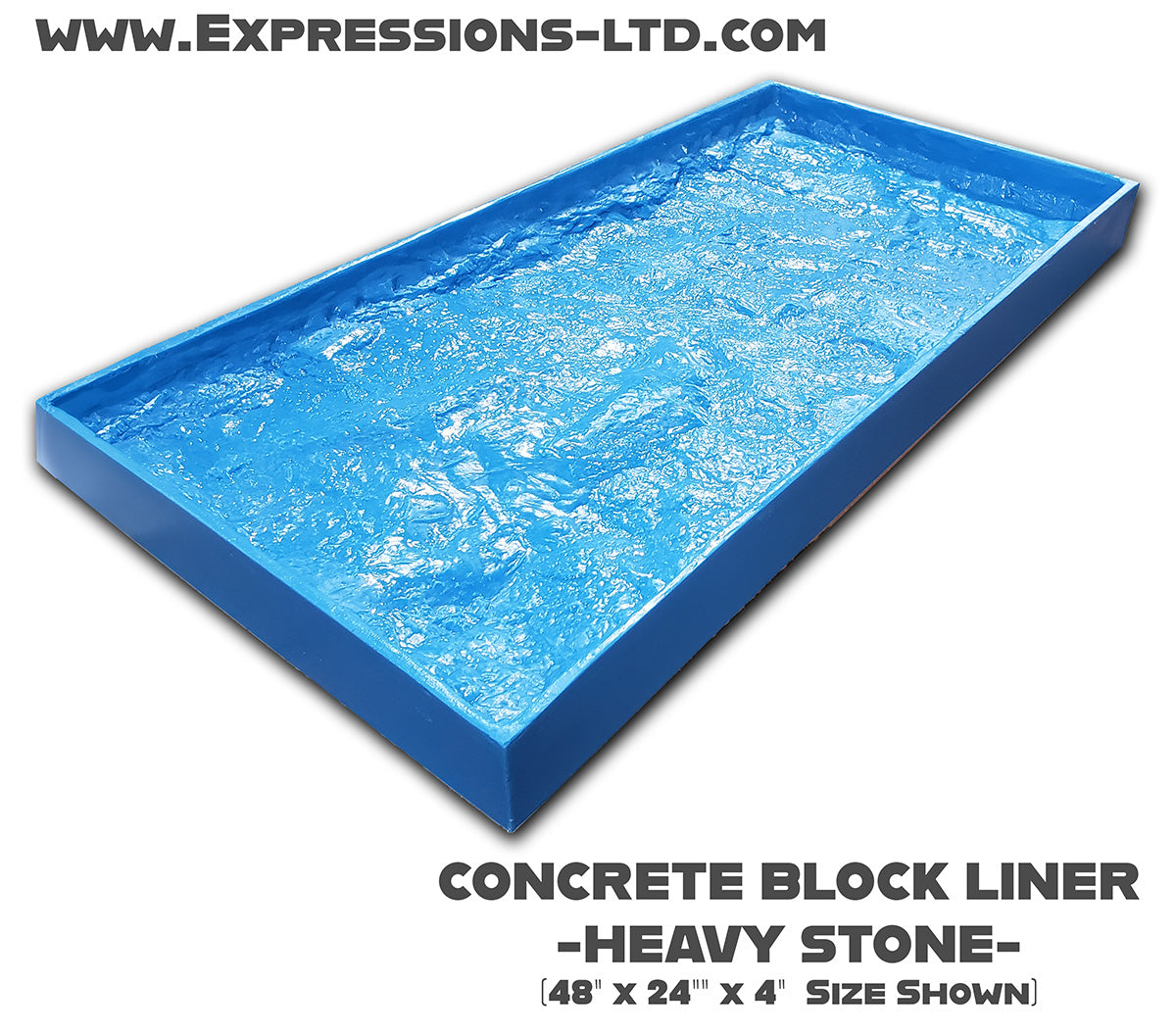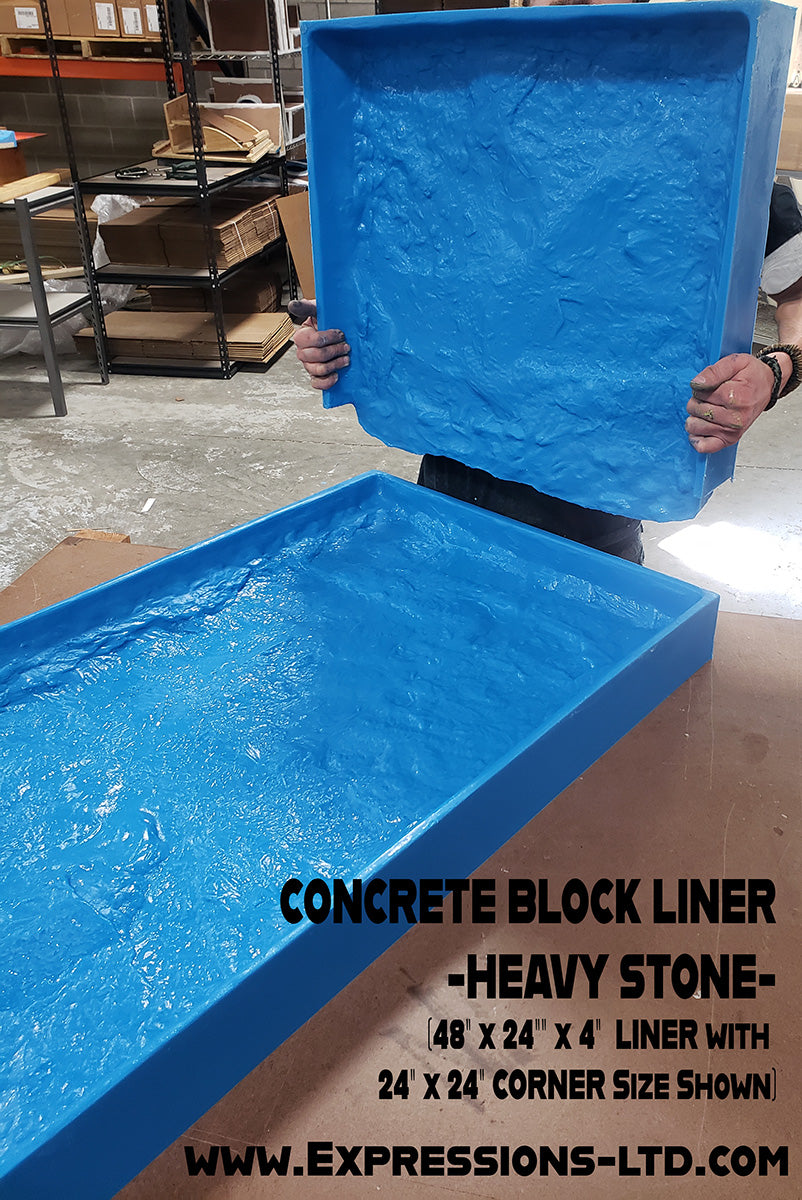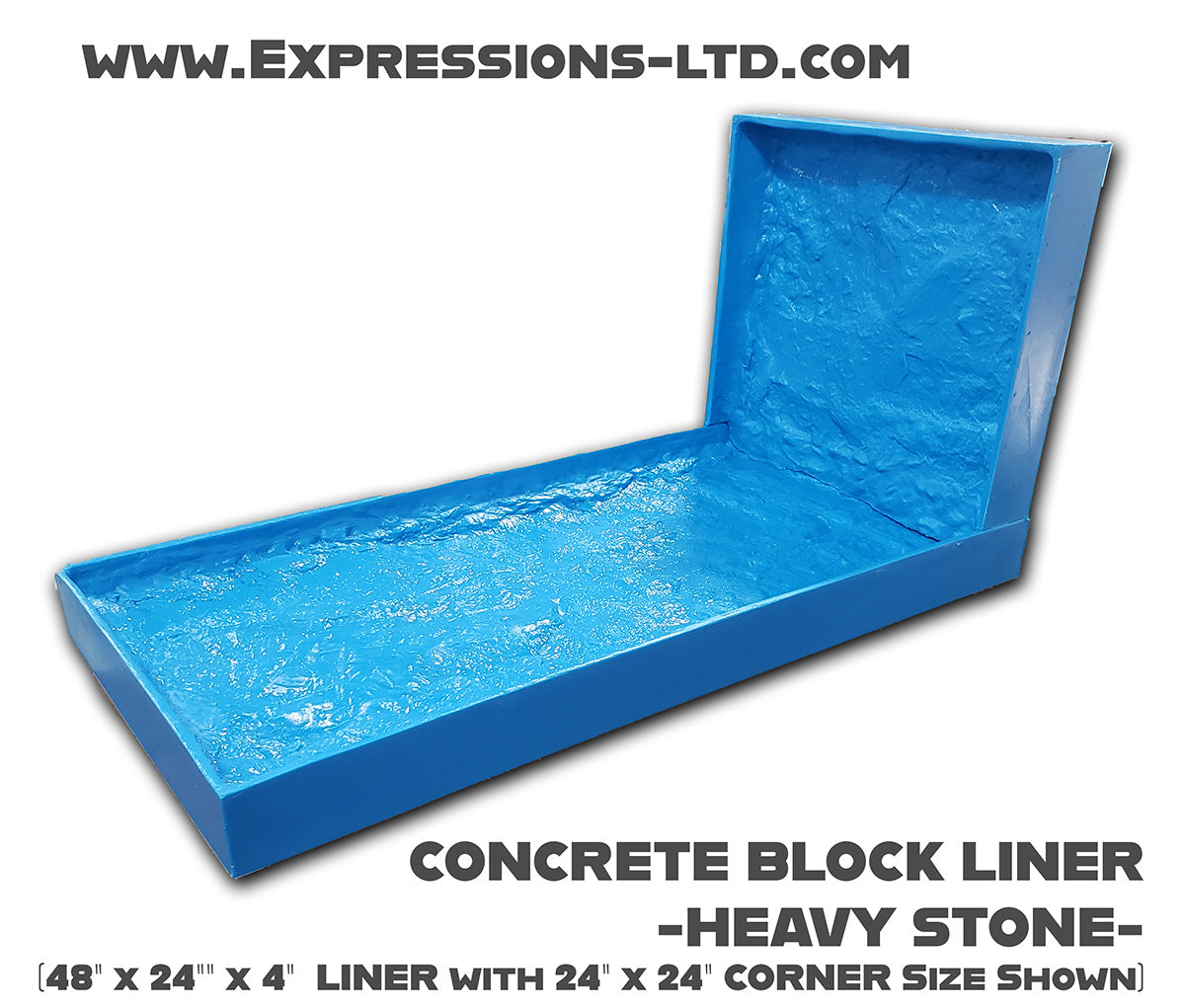





Concrete Block Mold Liner - Granite Stone Heavy Rock
Mold size:
Mold size
Quantity:
Fast Ship: Usually takes 1-2 business days to ship out.
NO FREE SHIPPING on this product. Please order separately from other products that may qualify for Free Shipping.
Ships from Utah (Click for average Ground delivery map )
)
 Ships via FedEx/UPS only
Ships via FedEx/UPS only
Ships from Utah (Click for average Ground delivery map
 )
)
 Ships via FedEx/UPS only
Ships via FedEx/UPS only
Concrete Block Mold Liner - Granite Stone Heavy Rock
- Rougher stone rock style large block liner. Can be cut down with a table saw to create various form sizes (when cutting liners, just make multiple passes on a table saw, cutting about 1/8"-1/4" of the rubber per pass).
- Designed for creating Blocks, Steps, Columns, Fences, etc.
- These Liners are called 'Block' liners because they can easily be used to make large concrete blocks, as you would see for retaining walls. Simply create a wood or metal frame to hold the liner when making then into blocks, set the liner in the bottom of the box, and fill with concrete.
- Corner piece can be placed in your box form on one end as well, when needed, for making a textured corner block.
- Made of extremely durable polyurethane that can flex and stay strong.
- Join seams using silicone.
- Fast and easy to place in a mold, and quick to clean after use.
- Good for hundreds of uses- Actually gets better with each use as they season.
Specifications Concrete Block Mold Liner - Granite Stone Heavy Rock:
-
- 6 foot: 72"L x 24"H x 4" 100lbs
- 4 foot: 48"L x 24"H x 4" 72lbs
- 3 foot: 36"L x 24"H x 4" 50lbs
- 2 foot: 24"L x 24"H x 4" 38lbs
- Corner: 24" x 24" x 4" 38lbs (CORNER Liner is chamfered to fit Main Liner texture)
- Shipping: Due to weight, this is non-free shipping item, so please order separately from other 'free shipping' items, and shipping will be added at checkout based on your ship-to location.
- *Occasional imperfections may be present on the rubber form liners, and can be removed or altered using a sharp utility knife, or a very abrasive sand paper / resin-bound grinding discs.
Using Concrete Block Mold Liner - Granite Stone Heavy Rock:
- Rubber liners can be curved to form a slight radius. If the rubber liner begins to ripple and distort, then the radius is too tight, so you will need to make the curve radius larger to ensure a smooth, consistent edge detail.
- Liners can be cut to fit your form. Cut using a SHARP razor knife, or with a sawsall. Liners can be cut straight, or mitered at angles so they fit tightly in your form.
- Place rubber liner in your form and either silicone in place, nail with a small brad finish nailer, or screw through the backing form into the rubber liner.
- For most applications (Precast), run a silicone a bead across the bottom edge of the ruber liner, up any corners, and across any joined together seams, to create a water-tight seal.
- Use of a polyurethane rubber safe Form Release (sold here) is recommended: Form release helps create a smoother finish on the concrete, less air pockets in the concrete edge, and easier to clean the Form Liners when finished.
- Vibrate concrete well (either vibrating the concrete, or rapidly tapping the edges of the forms with a hammer or palm sander), or use your fingers to compact the concrete against the Form Liner to remove as many air pocket voids as possible.
Liner Removal:
- After the concrete is sufficiently set up (typically 2-3 days for normal precast concrete), remove the form liner.
- If the form liner needs to be removed before the concrete is cured (usually only when using on cast in place concrete, such as steps or pool decks), make sure to remove edge slowly, carefully, and make sure you used a good release first!
- Removal is simple- start on one end, and slowly peel the form liner away from the concrete.
- Concrete may have small 'bumps' which can be sanded off with quickly with Diamond Sanding Pads (sold here). These bumps tend to disappear the more the Rubber form liner is used, as it becomes seasoned.
- Fill any air pocket voids with a Concrete Slurry Mix.
Rubber Liner Care:
- Clean with a stiff brush and water after each use. Any silicone left on the forms should be peeled or scraped off (the sooner the easier to remove). Any hardened concrete and difficult to remove silicone can usually be removed using a wire brush.
- Muriatic Acid can be used to clean of cement residue from the rubber form liners in a 20:1 ratio (20 parts water to 1 part muriatic acid). Rub the rubber form liner with a stiff nylon brush and the muriatic acid water. Rinse form liner thoroughly with clean water.
- Store form liners out of direct sunlight, laid out flat.
- If form liners ever get curved or twisted so they don't lay flat naturally, the easiest solution is to lay them out flat on a concrete or asphalt surface on a really hot day and let the sun heat them up, straighten them out, and then when they cool they should hold their shape more naturally.
Video showing cutting down the height on a rubber liner using a table saw:


